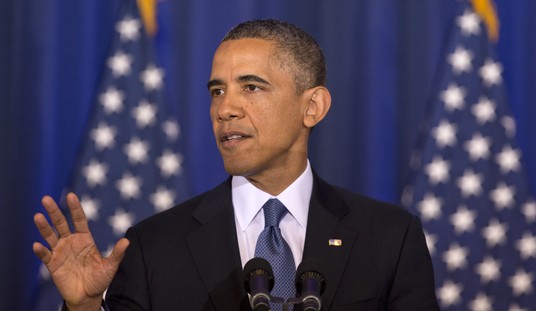Check out the previous installments in James Jay Carafano’s ongoing series exploring war films: The 10 Best Movies to Watch to Understand the Cold War, 10 War Movies Guaranteed to Make You Cry, America’s First Wars in 10 Movies, 10 Movies For Understanding the Civil War, A 10 Film Introduction to America’s Turn of the Century ‘Small Wars,’ and America Over There! A 10 Film Introduction to World War I. Also visit the PJ Store where Victor Davis Hanson presents “World War II,” a six episode video lecture series. Available for a limited time for just $99!
10. For Whom the Bell Tolls (1943)
Even before the U.S. took on the Axis powers, American volunteers headed overseas to fight fascism in the Spanish Civil War (1936-1939). In the film adaptation of a best-selling Ernest Hemingway novel, Gary Cooper romances Ingrid Bergman while on a suicide mission to blow up an enemy-held bridge. For Whom the Bell Tolls (1943) is not the best history. As a New York Times review noted, the film’s “protagonists are plainly anti-fascists,” but the movie did little to explain the muddled politics of the war. Still, it’s a magnificent movie. It earned nine Academy Award nominations and was number one at the box office that year.
9. In Harm’s Way (1965)
Before Pearl Harbor, Americans overwhelmingly opposed U.S. entry into the war. After the Japanese attack on December 7, 1941, they rolled up their sleeves and said, “There’s a war to be won.” Every time Hollywood tackles Pearl Harbor, the film seems to be as big a disaster as the raid. From Here to Eternity (1953) is a fine film, but it’s more melodrama than history. Tora! Tora! Tora! (1970) is leaden and plodding. Pearl Harbor (2001) is a cliché-ridden, cringe-worthy mess. In Harm’s Way, on the other hand, is an unappreciated war-film classic, with a balance of history and fiction that’s watchable, informative and true-to-life. John Wayne leads an all-star cast that progresses from Pearl Harbor to the island-hopping counteroffensive that put Japan on the defensive.
8. Guadalcanal Diary (1943)
The war in the South Pacific couldn’t just be won at sea. This film tells the story of a key land campaign on the island of Guadalcanal. It’s also notable for introducing the classic Hollywood trope: the all-American squad whose members hail everywhere from the inner city to the heartland. In this one, the Mexican-American is portrayed by a young Anthony Quinn.
7. Action in the North Atlantic (1943)
While the U.S. conducted a holding action in the Pacific, FDR directed his generals to deliver on Job 1: “Defeat Germany first.” But before the Americans could invade fortress Europe, they needed to move men and material across the Atlantic. Not all of the heroes of the Battle of the Atlantic were in the Navy. Humphrey Bogart is in patriotic sailor in the Merchant Marine, braving the transatlantic passage against German U-boats.
https://www.youtube.com/watch?v=rYFpoyS-OUg
6. The War Lover (1962)
The Allies’ strategy called for crushing the Third Reich from the air as well as via land invasion. Few jobs were more harrowing and dangerous than crewing a bomber over Nazi Germany. This film is no Twelve O’Clock High (1949). Still, it’s a fascinating character study of men at war. Here, Steve McQueen is an arrogant and reckless bomber pilot.
5. Patton (1970)
From the first land battles in North Africa to the final German surrender, no combat commander was in the thick of the action more than the flamboyant and controversial George S. Patton. This brilliant biopic staring George C. Scott is one the greatest war stories ever committed to celluloid.
4. Midway (1976)
Not the best Navy movie ever made. This film’s greatest virtue is that it is generally accurate in portraying the most critical naval battle of the war, a decisive American victory from which the Japanese navy never recovered. Charlton Heston plays the central role in a Hollywood-added subplot that’s meant to boost emotional engagement with the audience, but it’s just an annoying distraction from the history of this epic naval battle.
3. The Beginning or the End (1947)
Hollywood has tried several times to tell the story of the Manhattan Project and the nuclear bombing of Japan. The most watchable is still the first. Brian Donlevy is Gen. Leslie Groves, relentlessly driving his scientists to build the bomb that will end the war. For those who can’t handle black and white films there is always Fat Man and Little Boy (1989), featuring Paul Newman as a more grumpy Groves.
2. Judgment at Nuremberg (1961)
The war isn’t over until justice is done. Spencer Tracy leads an all-star cast in the trial of high-ranking Nazi war criminals in post-war Germany.
1. Emperor (2012)
Tommy Lee Jones is Gen. Douglas MacArthur determining the future of postwar Japan. This fictionalized version of actual events is an appropriate codicil to the story of the good war. A little Hollywood, a little history… our movie remembrances of World War II are as much part of our modern memory as the war itself.









Join the conversation as a VIP Member